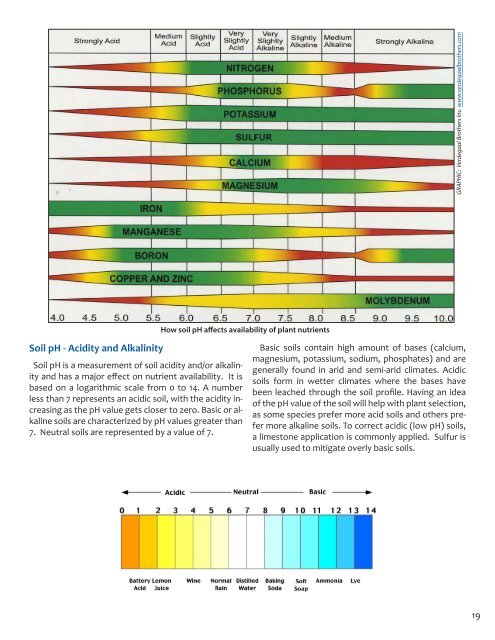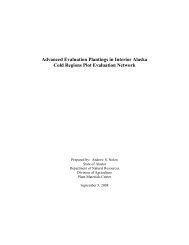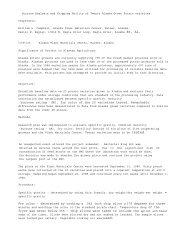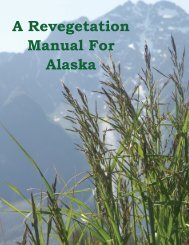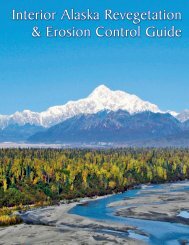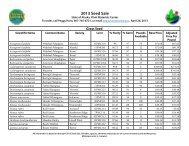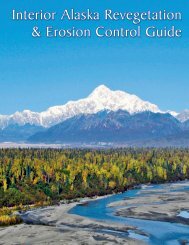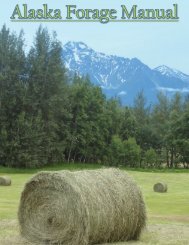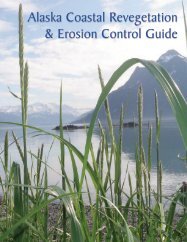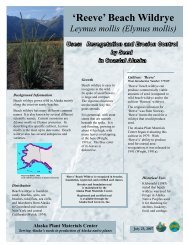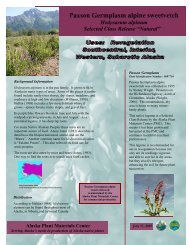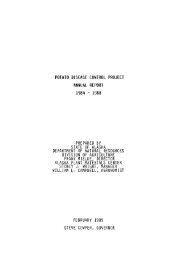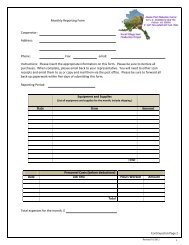Alaska Forage Manual - Alaska Plant Materials Center - State of ...
Alaska Forage Manual - Alaska Plant Materials Center - State of ...
Alaska Forage Manual - Alaska Plant Materials Center - State of ...
You also want an ePaper? Increase the reach of your titles
YUMPU automatically turns print PDFs into web optimized ePapers that Google loves.
GRAPHIC: Verdegaal Brothers Inc. www.verdegaalbrothers.com<br />
How soil pH affects availability <strong>of</strong> plant nutrients<br />
Soil pH - Acidity and Alkalinity<br />
Soil pH is a measurement <strong>of</strong> soil acidity and/or alkalinity<br />
and has a major effect on nutrient availability. It is<br />
based on a logarithmic scale from 0 to 14. A number<br />
less than 7 represents an acidic soil, with the acidity increasing<br />
as the pH value gets closer to zero. Basic or alkaline<br />
soils are characterized by pH values greater than<br />
7. Neutral soils are represented by a value <strong>of</strong> 7.<br />
Basic soils contain high amount <strong>of</strong> bases (calcium,<br />
magnesium, potassium, sodium, phosphates) and are<br />
generally found in arid and semi-arid climates. Acidic<br />
soils form in wetter climates where the bases have<br />
been leached through the soil pr<strong>of</strong>ile. Having an idea<br />
<strong>of</strong> the pH value <strong>of</strong> the soil will help with plant selection,<br />
as some species prefer more acid soils and others prefer<br />
more alkaline soils. To correct acidic (low pH) soils,<br />
a limestone application is commonly applied. Sulfur is<br />
usually used to mitigate overly basic soils.<br />
19


